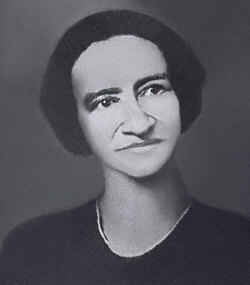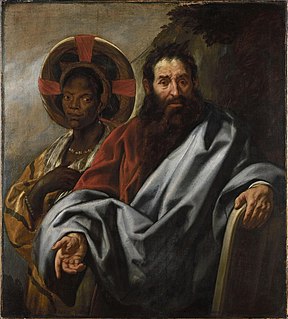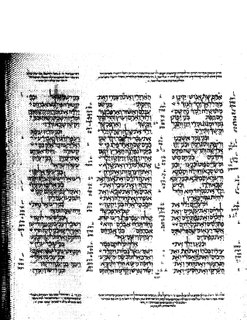Related Research Articles

The Bible is a collection of religious texts or scriptures that are held to be sacred in Christianity, Judaism, Samaritanism, and many other religions. The Bible is an anthology – a compilation of texts of a variety of forms – originally written in Hebrew, Aramaic, and Koine Greek. These texts include instructions, stories, poetry, and prophecies, among other genres. The collection of materials that are accepted as part of the Bible by a particular religious tradition or community is called a biblical canon. Believers in the Bible generally consider it to be a product of divine inspiration, but the way they understand what that means and interpret the text can vary.

The demography of Kenya is monitored by the Kenyan National Bureau of Statistics. Kenya is a multi-ethnic state in East Africa. Its total population was at 47 558,296 as of the 2019 census.

The Kingdom of Judah was an Israelite kingdom of the Southern Levant during the Iron Age. Centered in Judea, the kingdom's capital was Jerusalem. The other Israelite polity, the Kingdom of Israel, lay to the north. Jews are named after Judah and are primarily descended from it.
Zerah or Zérach refers to several different people in the Hebrew Bible.

Zipporah, or Tzipora, is mentioned in the Book of Exodus as the wife of Moses, and the daughter of Reuel/Jethro, the priest and prince of Midian.

Miriam is described in the Hebrew Bible as the daughter of Amram and Jochebed, and the older sister of Moses and Aaron. She was a prophetess and first appears in the Book of Exodus.

Axum or Aksum is a town in the Tigray Region of Ethiopia with a population of 66,900 residents.
Cush or Kush, according to the Hebrew Bible, was the oldest son of Ham and a grandson of Noah. He was the brother of Mizraim, Phut, and Canaan. Cush was the father of Nimrod, a king called the "first heroic warrior on earth".
Tantamani, also known as Tanutamun or Tanwetamani was ruler of the Kingdom of Kush located in Northern Sudan, and the last pharaoh of the Twenty-fifth Dynasty of Egypt. His prenomen or royal name was Bakare, which means "Glorious is the Soul of Re."

Ebed-Melech is mentioned in the Book of Jeremiah chapter 38 as an Ethiopian official at the palace of king Zedekiah of Judah during the Siege of Jerusalem. The name is translated as Servant of the King, and as such may not be his proper name but a royal title. The text relates that he was a Cushite. Ebed-Melech is notable for rescuing the prophet Jeremiah from the cistern into which he had been cast to his death. Later Jeremiah relayed God's message to him saying that he, Ebed-Melech, would "not fall by the sword" during the Fall of Jerusalem to the Babylonians because he had put his trust in Him (God).

Ethiopians are the native inhabitants of Ethiopia, as well as the global diaspora of Ethiopia. Ethiopians constitute several component ethnic groups, many of which are closely related to ethnic groups in neighboring Eritrea and other parts of the Horn of Africa.

Ancient Aethiopia, first appears as a geographical term in classical documents in reference to the upper Nile region of Sudan, as well as certain areas south of the Sahara desert. Its earliest mention is in the works of Homer: twice in the Iliad, and three times in the Odyssey. The Greek historian Herodotus "specifically" uses the appellation to refer to such parts of sub-Saharan Africa as were then known within the inhabitable world.

Meqabyan, also referred to as Ethiopian Maccabees and Ethiopic Maccabees, are three books found only in the Ethiopian Orthodox Old Testament and Beta Israel Mäṣḥafä Kedus Biblical canon. The language of these books is Geʽez, also called Classical Ethiopic. These books are completely different in content and subject from the various better known books of Maccabees in Catholic and Eastern Orthodox Bibles.
Burunge is an Afro-Asiatic language spoken in Tanzania in the Dodoma Region, by the Burunge people, a small community of about 13,000 native speakers that live in the Northeastern region of Tanzania. The Burunge belong to a cluster of Tanzanian groups known as Southern Cushites, which also categorizes Burunge as part of the South Cushitic language family. The Burunge live in close proximity to other languages such as the Rangi, Gogo and Sandawe, and ultimately, their language and culture is endangered by dwindling number of speakers and absorption by larger tribes.

Tharbis, according to Josephus, was a Cushite princess of the Kingdom of Kush, who married Moses prior to his marriage to Zipporah as told in the Book of Exodus.

Drusilla Dunjee Houston was an American writer, historian, educator, journalist, musician, and screenwriter from West Virginia.
Rauso was a region in the Horn of Africa in Late Antiquity.

Moses and his Ethiopian wife Zipporah, c. 1645–1650, is a painting by Jacob Jordaens, a Flemish Baroque painter. The painting is a half-length depiction of the biblical prophet Moses, and his African wife.

2 Chronicles 14 is the fourteenth chapter of the Second Book of Chronicles the Old Testament in the Christian Bible or of the second part of the Books of Chronicles in the Hebrew Bible. The book is compiled from older sources by an unknown person or group, designated by modern scholars as "the Chronicler", and had the final shape established in late fifth or fourth century BCE. This chapter belongs to the section focusing on the kingdom of Judah until its destruction by the Babylonians under Nebuchadnezzar and the beginning of restoration under Cyrus the Great of Persia. The focus of this chapter is the reign of Asa, king of Judah.

Ethiopia is considered the site of anatomically modern humans emergence. Archeological discoveries in the country's sites garnered specific earliest fossils succession including the female hominin Australopithecus afarensis lived 3.2 million years ago, and Ardipithecus ramidus. Human settlements in present-day Ethiopia began at least in Late Stone Age and agricultural revolution took place in the third millennium BC. Formulation of ethnolinguistic groups of Afroasiatic speakers and Nilo-Saharan people shaped with new ethnic cultural and linguistic entity by the first millennium BC.
References
- 1 2 Hare, John Bruno. "Wonderful Ethiopians of the Ancient Cushite Empire Index". Internet Sacred Text Archives. Evinity Publishing. Retrieved 7 October 2018.
- ↑ Wonderful Ethiopians of the Ancient Cushite Empire. State University of New York Press. Retrieved 7 October 2018.